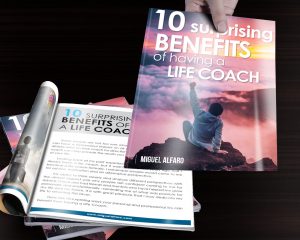
Techniques to Improve Creativity and Problem Solving
Creativity and problem-solving are essential skills for any entrepreneur or professional who wants to stand out in a competitive environment. The ability to generate innovative ideas and find effective solutions to everyday challenges can make the difference between success and stagnation. Fortunately, there are various techniques that can help you improve both abilities, boosting your personal and professional performance.
One of the first steps to improving creativity is to foster an open mindset. This means being willing to consider new perspectives and approaches, even if they seem unconventional at first. When you allow yourself to explore different viewpoints, you open the door to new ideas and solutions. An effective technique for developing this mindset is brainstorming, in which you generate a list of possible solutions without censorship or judgment. The goal is to stimulate unrestricted creativity by allowing ideas to flow freely. Once you’ve compiled a set of ideas, you can analyze which ones are the most viable or innovative.
In addition to brainstorming, one technique that can improve both creativity and problem-solving is the “lateral thinking” technique. This technique, proposed by psychologist Edward de Bono, is based on the idea that problems do not always have to be solved in a straightforward or logical manner. Lateral thinking invites you to approach challenges from unexpected or creative angles. For example, if you face a complex problem in your business, instead of focusing solely on traditional solutions, you can look for alternative approaches that involve changes in processes or new ways of collaborating. This not only improves your problem-solving ability, but also strengthens your ability to generate disruptive ideas.
The technique of visualization also plays an important role in enhancing creativity . Visualizing the problem or challenge in your mind can help you understand it better and find solutions more quickly. Imagine different scenarios and possible outcomes as you focus on solving a problem. This practice helps clarify ideas and allows creativity to flow more naturally. The more you practice visualization, the more effective it will become as a tool for facing challenges and overcoming obstacles in your day-to-day life.
Another useful approach to improving problem solving is the use of mind maps. Mind maps allow you to break down a problem into its smallest components and visualize the connections between the different parts. Not only does this technique organize information more clearly, it can also reveal solutions you hadn’t initially considered. By viewing the problem from a broader perspective, innovative ideas and creative solutions are more likely to emerge.
Practicing meditation and mindfulness can also play a key role in developing creativity and problem-solving. These practices help clear the mind of stress and distractions, allowing for a deeper focus on the problems at hand. By quieting the mind and reducing mental noise, you can unlock your creative ability and think more clearly and effectively. Spending just a few minutes a day meditating can make a huge difference in your ability to approach challenges with a fresher, more open mind.
Another effective technique to enhance creativity is exposure to new environments and experiences. Often, the best ideas come when we step out of our comfort zone and expose ourselves to different situations or environments. Traveling, reading about diverse topics, attending conferences, or simply interacting with people from different disciplines can stimulate your creative thinking. By broadening your horizons, you can incorporate new ideas and approaches into your work, which will enrich your ability to solve problems in innovative ways.
When it comes to problem solving, a key technique is “problem breaking.” This technique involves breaking down a large problem into smaller, more manageable parts. By breaking the problem down into simpler components, it’s easier to identify specific solutions for each part. Additionally, this technique reduces the sense of overwhelm that often accompanies complex problems, allowing for a more organized and efficient approach to finding solutions.
One approach that can improveboth creativity and problem-solving is collaboration. Working with others allows you to access different skills and perspectives, which cn enrich your creative process and make problem-solving easier. Collaboration encourages the exchange of ideas and can lead to more innovative and effective solutions than if you were to work alone. By involving colleagues, mentors, or experts in your process, you can boost your ability to solve problems more effectively.
Creativity and problem-solving are skills that can be developed with practice and the use of appropriate techniques. From brainstorming and thinking to meditation and collaboration, there are many ways to improve these abilities and apply them in your professional and personal life. By incorporating these techniques into your daily routine, you will be able to face challenges with greater confidence and find more innovative and effective solutions.







